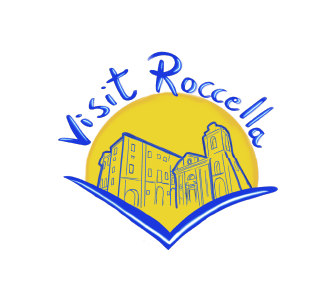translated with AI
The garden that hosts the Monument to the Fallen of Roccella Jonica is of modest size, and in the past it was the subject of a long and lively controversy between the Municipality of Roccella and the heirs of the Bishop of Gerace, Pietro Domenico Scoppa.
The story goes back a long way, but it is worth telling it albeit in a synthetic form. In 1580, the Convent of the Minim Order of St. Francis of Paola was built, by the will of D. Livia Spinelli, wife of Girolamo Carafa. The construction of the Convent took place thanks to the Marquis of Castelvetere who offered the paolotti “a tomolata of land to make vegetables” of their property, with the contribution of the University of Roccella which gave the convent the Church of S. Vittore. The earthquake of 1783 destroyed much of the convent, which had become uninhabitable. The subsequent government regulations for the recovery and reconstruction plan of the part destroyed by the earthquake, provided for the removal of the paolotti and, consequently, their assets were put up for sale. On that occasion, Bishop Scoppa bought part of that “tomolata” of land.
With the arrival in the Kingdom of Naples of Napoleon’s troops, in 1806, a series of laws were issued, among which was the end of feudalism, and feudal assets were to return to the ownership of the Universities. Hence came the dispute over that paolotti garden between the Municipality of Roccella and the Scoppa heirs. An unprecedented dispute, which lasted for decades and put a strain on the municipal coffers for expenses related to appraisals, notarial deeds, various documents, legal studies, etc., with the result of settling for that rectangle of flower beds around the Monument.
It is worth noting that even before the war, this open space hosted the Monumental Fountain, which is currently located in Mazzone Square (or Stazione). It was 1882 when the Municipal Council discussed the opportunity to provide the Marina district of Roccella with drinking water, strongly penalized by the distance from the public springs of Pigadi and Ciurria, from which people usually supplied themselves.
On March 23, 1882, the Municipal Council approved the project of the Monumental Fountain drawn up by the architect Vincenzo Gallucci. Such an artistic structure provided the population of the Marina district with precious water for over forty years.
Meanwhile, with the outbreak of the First World War, in the three years of the conflict, Roccella lost about eighty of its sons. Every family had to mourn a husband, a son, a nephew, etc. In some families, there were even two Fallen to mourn.
In 1918, at the end of the conflict, the population of Roccella, on the emotional wave of the tragedy, through its authorities, proposed to do something to remember the many young people from Roccella. After a few months, the Municipal Council proposed the “Establishment of a Committee for the honors to the fallen of the Italo-Austrian war”.
Subsequently, a list of 42 “individuals” was presented and approved: the Mayor, the Deputy of the College, the Commander of the Carabinieri, the Commander of the Guardia di Finanza Station, the Station Master, the Priests, and all the honest citizens (doctors, notaries, lawyers, merchants, etc.).As often happens … nothing was done.
Subsequently, a little everywhere, tribute was paid to the sacrifice of young Italians, from every town, for the Homeland, by erecting monuments and plaques with the names of the Fallen. A cult and exaltation was given during the early years of fascism. In Roccella, it was necessary to wait until 1926 to see the same intention proposed again. In the agenda of the meeting of the Municipal Council on March 30, 1926, at the first point, we read: “Measures on the Monument to the Fallen in the war”.It was the period in which the neighboring Municipality of Gioiosa Jonica had ordered the construction of their Monument to the Fallen in Turillo Sindoni¹, the most fashionable artist of the time in works of this kind. Such Monument of Gioiosa was inaugurated in October 1926, just when in Roccella the same topic was being discussed. Probably, given the circumstances, the artist was contacted by the municipal authorities of Roccella for the execution of a Monument there too. It is not known if the choice stemmed from the vision of a model of work already executed by Sindoni himself, similar to the Monument to the Fallen in Augusta (SR), inaugurated in 1924.
Once the Monument was erected in Roccella, the municipal and religious authorities agreed on its blessing for August 19, 1928, coinciding with the laying and blessing of the foundation stone of the new Mother Church under construction. At 4 pm on that day, the Mayor Cav. G. Tassone and the Most Reverend Bishop Giovanni Battista Chiappe attended the inauguration of the Monument in the presence of the citizens, and then went near the foundations of the Mother Church, where a representative stage was erected. In the marble slabs walled into the base of the Monument, there are 73 names of Roccella Fallen, although at least a dozen other names of Fallen who were discovered and learned about after 1928 should be added.
Lastly, even the Municipality of Maddaloni (Caserta) chose for their Monument to the Fallen a copy identical to those of Augusta and Roccella, which was inaugurated on November 17, 1929.
